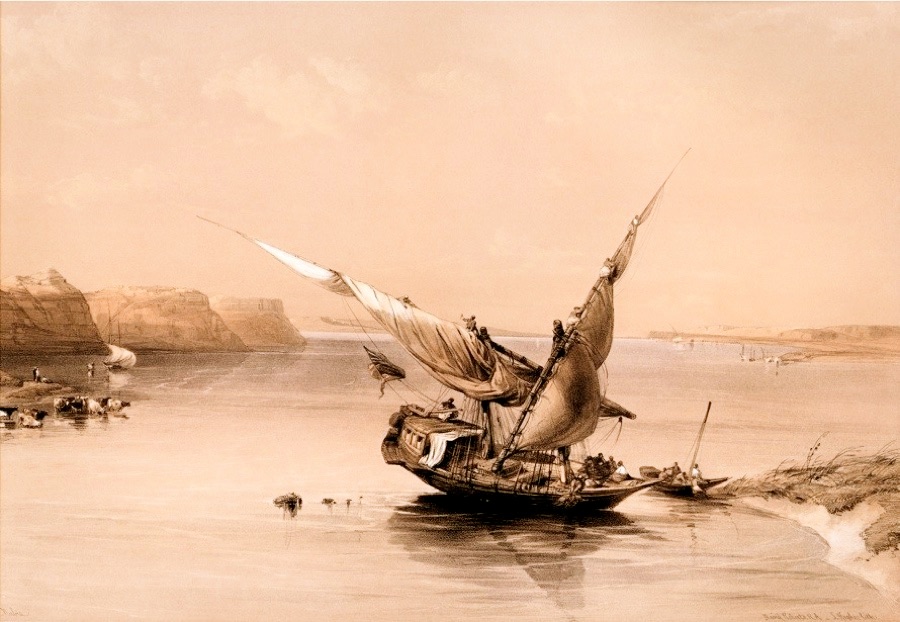APPROACH TO THE FORTRESS OF IBRIM.
“THIS fortress,” says Mr. Roberts, “approaches more in appearance to those of the Moslems, which I have seen in Spain, both in situation and in regularity of form. It is built on the very brink of a precipice like that of Ronda, and flanked at intervals with square towers of hewn or squared stone. The whole is now in a ruined condition, and, I believe, totally deserted. We did not see a human being near it.”
Its height above the river is from two hundred to three hundred feet, and its look-out is over the arid sands of the desert and naked and desolate mountains. It is supposed to be the Primis Parva of the ancients – a station which Petronius, the Prefect of Egypt under Augustus, occupied and garrisoned after he had made a successful expedition against the Queen of the Ethiopians, Candace.
The Romans, however, never attempted to pursue their conquests further to the south on the Nile. Candace, knowing that the Roman Legions had been sent from the Thebaïd into Arabia, took advantage of their absence and marched an army upon Syene, now Assouan, and destroyed the garrisons of Elephantina and Philæ. To revenge this insult, Petronius not only repulsed them, but, with his disciplined troops, pursued the army of Candace into her dominions, and drove them beyond her capital, Naputa, to take refuge in the deep recesses of her country. On his return he left a strong force at Primis, to keep the Ethiopians in check; but this was not long continued: the defeat which they had received from the Romans was a lesson not easily forgotten; and, at length, the station was abandoned, and they withdrew from a garrison so remote.
The place is now deserted and in ruins, though it was not many years since Ibrahim Pacha was besieged there by the Memlooks, whom he had driven out of Egypt. He had taken up his position there, when they endeavoured to cut him off, but, owing to its great natural strength, he maintained it several months against their utmost efforts. The besiegers intercepted their provisions, and they were reduced to severe privations. At length relief came from Lower Egypt, the Memlooks fled, entered Dongola, murdered its sovereign, and established there the residue of a military power, which scarcely ever had a parallel in history. Before or after the siege of Ibrim nearly every Memlook was sacrificed to the cruel but necessary policy of Mehemet Ali.
Mr. Roberts has in this scene introduced the boat of the Nile, to shew the manner in which the boatmen reef the large sail by ascending the yard. When the boat is about to put up for the night, a stake is driven into the ground, by which it is secured. In descending the river these huge sails are lowered and slung midships, forming an awning across the decks. The boat itself is allowed to float down with the current, unless the wind against it is fresh enough to require that it be tracked or rowed.
Roberts’s Journal. Wilkinson’s Egypt and Thebes.


